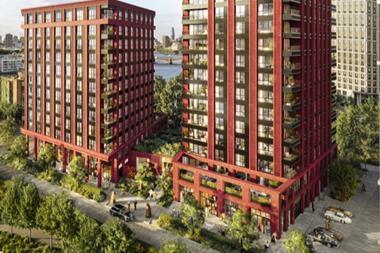Milan and Rome offer Italy's brightest prospects as occupiers become more sophisticated, but Rome remains challenging, says Ian Cundell
Italy has suffered less than other countries as the credit crunch has bitten and investors' interest remains strong. Lionello Rosina, head of Italy for Savills, said in a recent bulletin: "We do not expect a major yield correction as the market is not seen as overpriced."
The general Italian story is familiar: real GDP growth was 1.5% in 2007, with a miserable year-end and forecasts for GDP growth in 2008 have gradually been revised downwards thanks to factors familiar in any European market. These include record oil prices, a strong euro impacting on consumers and businesses and more restrictions in debt markets. Inflation accelerated in the first quarter of this year, reflecting pressure in international markets in basic energy and food prices that were only partly offset by the appreciation of the euro.
The net result has been somewhat similar to that in Spain: prime office yields have moved out 25-50 basis points since the end of 2007, although it is worth noting that, according to Savills, yields never dropped below 5%, as seen in other European cities.
Savills' analysis shows a greater level of investment market activity in Milan than in Rome, mainly due to a greater supply of quality, investment-grade product, combined with a more mature market. As a result, yield compression was historically less dramatic in Rome over the past two years. Currently, prime office yields in Milan are in the region of 5-5.75% and in
the region of 5.25-6% in Rome, depending on the location.
At CBRE, Jonathan Hull argues that in Milan and Rome the markets are proving more robust than elsewhere, "provided the product is right", with the evaporation of debt-driven investment, the real estate fundamentals come into play. And in the office market, the fundamentals remain favourable and the sub-prime loan crisis has not had a big impact on the occupier market on the demand side and demand for grade-A properties is holding up, although driven by consolidation and rationalisation.
In Milan, office rents have risen - for the first time in about five years - to around €500/m2, with peaks over €550 m2, on the back of good occupier demand combined with the lack of prime quality office space in the CBD. Year-on-year comparison with the first quarter of 2007 show that prime rents increased 6%, according to CBRE. Office rents in the outlying submarkets, such as Sesto San Giovanni and San Donato Milanese, have also seen some upward pressure.
Many companies are moving to better locations and/or more efficient properties to meet their requirements and comply with international expectations, a relocation trend that is also helping to raise rental levels.
In Rome, one of the most ancient cities in the world, the office market is diverse and tricky for the investor. The city centre is characterised by small floor areas and historical buildings, whereas the EUR/ Torrino/Laurentina triangle to the south and the expanding Magliana Corridor towards Fiumicino can offer larger, more flexible floorplates and more modern accommodation.
Tenants are increasingly showing willingness to move from the CBD towards the south of Rome and the larger more flexible floor plates so often required by major occupiers. The main tenants in the south of Rome are public institutions and industrial sectors, while in the CBD the market is driven by consultant firms and the financial services sector.
The performance of the Rome office market has been moderate so far in 2008. Local occupiers continue take-up in the market through relocating to new premises, but many were being pushed by cost issues, looking to move to less expensive properties and secure more flexible lease agreements. Prime rents in CBD are expected to be stable, due to the ongoing lack of office space and continuing stable demand.
But, says Savills, in its latest bulletin, tenants are not generally prepared to sacrifice quality standards. "In fact the majority of demand requests continue to be for grade-A space, although concluded transactions relate to both grade-A and B buildings, reflecting the actual composition of Rome's office stock".
The most significant new development in the Rome market is Business Park Europarco located in the EUR district. This will be completed in 2008 and 2010 (second phase).
This year started with some good news for Milan, with its selection as host city of EXPO 2015, expected to bring some €20bn in investments, the creation of new jobs and the revival of infrastructure works planned or underway, according to Jones Lang LaSalle. "This is an opportunity for Milan to renew its image at the international level and transform itself into a modern city that is comparable to the other European capitals," says JLL's most recent research report.
The Expo is expected to use an area of almost 1.7m m2, north west of the city centre, in the municipalities of Rho and Pero. Rich and integrated infrastructure such as subway lines, highways, a high-speed railway line and better access to airports are planned.
JLL's general market analysis identifies two key market characteristics that will continue to apply in coming months: limited quality supply and greater maturity of occupiers.
Firstly, the limited supply of grade-A space during 2008 should increase competition among occupiers seeking space. The second point is linked to the growing maturity of companies in terms of property management and the previously mentioned desire to come in line with modern expectations.
Now, says JLL, instead of entering the market only as lease expiry approaches, companies are beginning their search for space earlier, often seeking consulting services during the initial phases of the search. JLL expects growing demand in the coming months.
On the supply side, growth should take place during the second part of the year. Rents will remain at the high levels recorded during the first quarter. Asking rent level has been recorded at €600 m2 during the first quarter of 2008, suggesting continued growth expectations.












